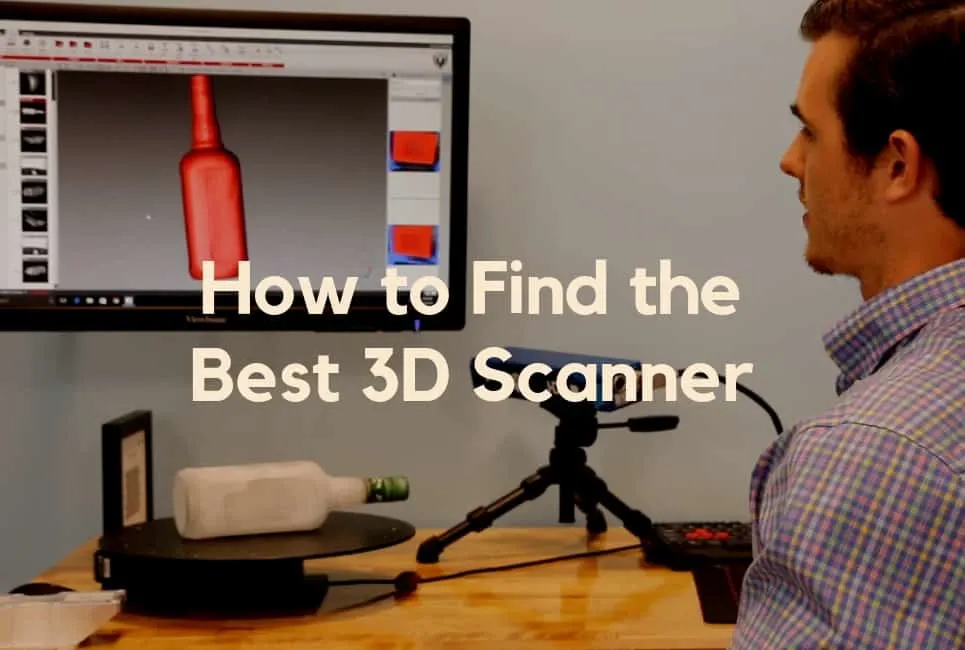- Top Things to 3D Print and Sell Online - May 22, 2023
To the untrained eye, 3D scanning can look both magical and effortless. The only thing you really need to learn is your budget, right? Wrong – there’s a lot of intricate scanning technology that goes into 3D scanning materials and photogrammetry processes, so if you want to figure out what equipment is best for you, read on to learn the essentials for choosing your best fit.
Table of Contents
The Process
First of all, let’s explore the process of 3D scanning to get a sense of what it can do and how it does that. The scan mode starts with the 3D scanning gathering data on a 3D object’s shape and other aspects of its appearance like color by using lasers to sweep the object with a line of light.
These lasers create point clouds to orient the object’s shape data, thus letting the scanner recreate the 3D data from the real world object into the computer world for model recreation.
A Laser 3D scanner is designed to capture highly detailed points of reference so the scanned objects can be rendered in a high level of exactitude. Lasers are ideal for this work because of their inherent precision, and they’re also quick to transfer the data into the point clouds needed for modeling.
This process is meant to capture free form shapes, measure contoured surfaces, and describe objects with complex geometries because the more intricate an object or shape is, the more data points are needed to describe it.
Once you get into things that need thousands or millions of data points to recreate them accurately, 3D scanning is both the fastest and most accurate way to do so, especially if you need repeatability as well.
There are several steps in the 3D scanning process. While you don’t need an engineering or desktop 3D scanner degree to start scanning, you DO need to realize what’s going on so you can find a scanner that optimizes your needs:
Acquiring data via 3D laser scanning
First you put the object you want to get a fixed scan of in the bed of the scanner’s digitizer, which is the flat, solid area meant to act as a nondescript background so the scanner will not pick up interference from areas that are not the object you want scanned.
Then the laser sweeps over the object – its speed and intensity controlled by that specific scanner’s software – which projects a line of laser light onto the surface. Two sensor cameras continuously record the changing distance and shape of the laser line across the X, Y, and Z axes, while it scans the object.
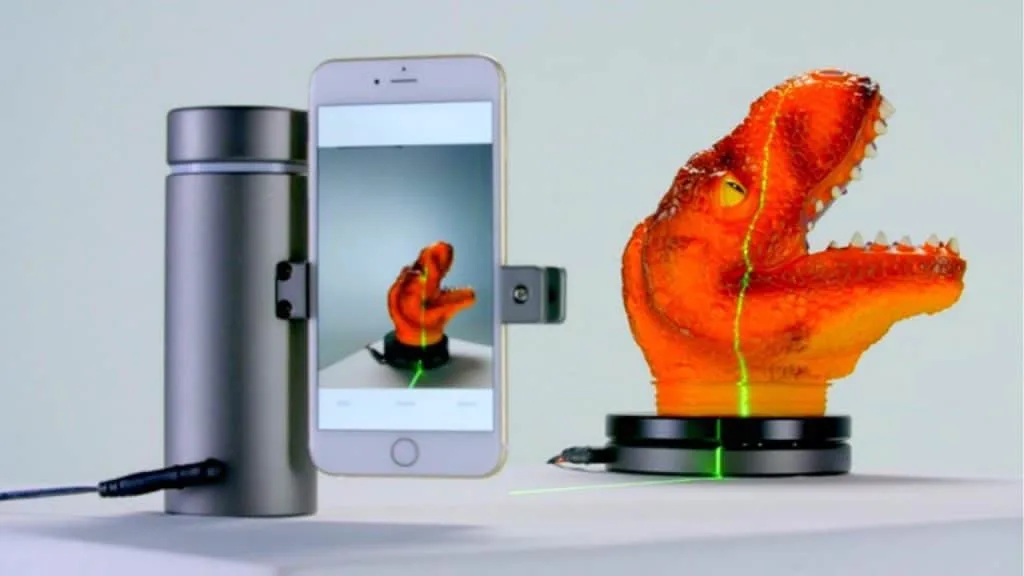
Data is visualized on a computer
The scan data appears as millions of points on your computer screen. This step literally goes at the speed of light.
Object is rendered
Once the object’s data is captured, the points merge together to form a solid, 3D picture of the object. There are two ways it can be rendered depending on what you are using the automatic scan for:
Point cloud data
Are you using the scanner data to inspect the 3D object? Then you’ll compare the data from your scan to the data on the original computer-aided drafting file for the object.
Your software will show you the differences between the CAD file and the actual object using a method called a color map deviation report, which means the differences will be highlighted using a color-coded system either you devised or that defaults in the software.
Computer-aided drafting model for reverse engineering
If you are planning on using your 3D scan to figure out how to design the object, you can use the scanned data as a CAD model, either as a surface model or a solid model, depending on your needs. Once the data is in a CAD file, you can either use that data as is to create an exact replica, or you can modify it for whatever differences you want to edit.
Different 3D Scanners: The Types
The hardware of a 3D laser scanner is a lot different than that of 3D printer options, so if you’re only familiar with making a 3D print, familiarize yourself with the parts of the scanner before you buy or use one so you can optimize your time with it and know what to concentrate on when you’re researching purchases.
There are several different types of scanners as well, so we’ll go through the parts that they all share, and then differentiate between the parts that vary so you know which process goes best with your projects.
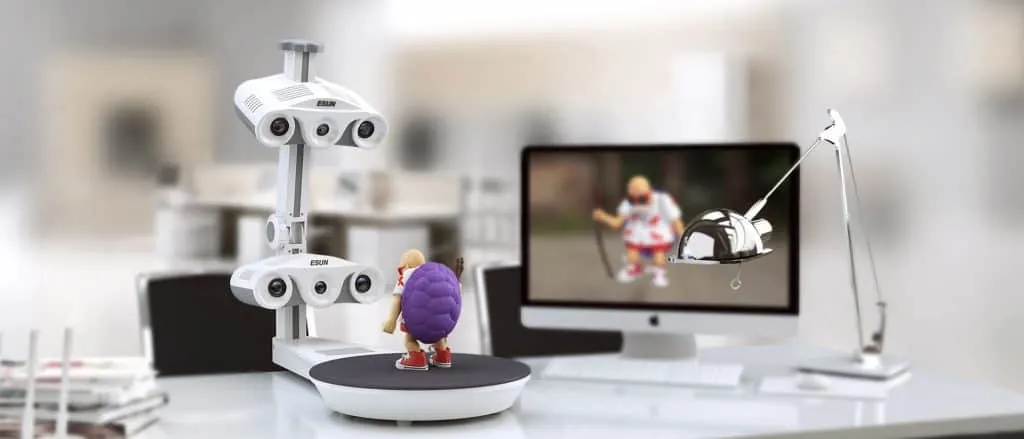
Contact 3D scanners
With a 3D scanning system, you put your object to be scanned on a flat surface that has been ground down to a specific smoothness. If the object can’t lay flat, it’s got supports to hold it in an optimum scanning position.
The scanning mechanism may have either a carriage, which means the surface that the object rests on moves along the axes under a rigid measuring device that sits right above the carriage; a flexible appendage that moves from above the object to scan it; or a combination of both.
Carriage scanners are best for objects that have either flat or smoothly contoured planes to be scanned. An articulated appendage works best on objects with sharp angles, abrupt changes in surface height, and holes that the scanner needs to go into to measure.
Pros
Contact 3D system scanners are extremely precise. Their full contact with the object being scanned means they are able to record surface and shape quirks exactly as they appear in real life, thus giving you a copy that is almost impossible to distinguish from the original.
Cons
The same attributes that make contact 3D scanners accurate are the ones that make them difficult to use for certain types of objects. Because contact scanners rely on touch to gather data about the objects they scan, there is a larger chance of damaging the object than if you used a non-contact portable 3D scanner.
Contact scanners are not for anything delicate or irreplaceable; museums and archives do not use them to scan their artifacts because of this risk. If you have similarly unique or just something you don’t want to risk damaging, use another type of 3D scanner.
Non-contact active scanners
These are the type of 3D scanners that use lasers, rather than mechanical measuring tools, to scan the 3D object.
Time-of-flight 3D scanners use a laser range finder to measure the area of a surface by timing the round trip of a pulse of light it emits. It scans the entire field of view one point at a time by changing the range finder’s direction. This is done in rapid succession for a smooth measurement.
Pros
Time-of-flight scanners have a large range. They can be used over very long distances, and so they’re useful for scanning objects many times their own size like buildings and mountains.
Cons
This long range comes at a cost of accuracy, however. The high speed of light makes it hard to measure, so the accuracy is within millimeters – which sounds good, except when you’re trying to make an exact replica of something small enough that missing millimeters means the whole shape is off.
Check out some of the top Non-Contact Active 3D Scanners here:
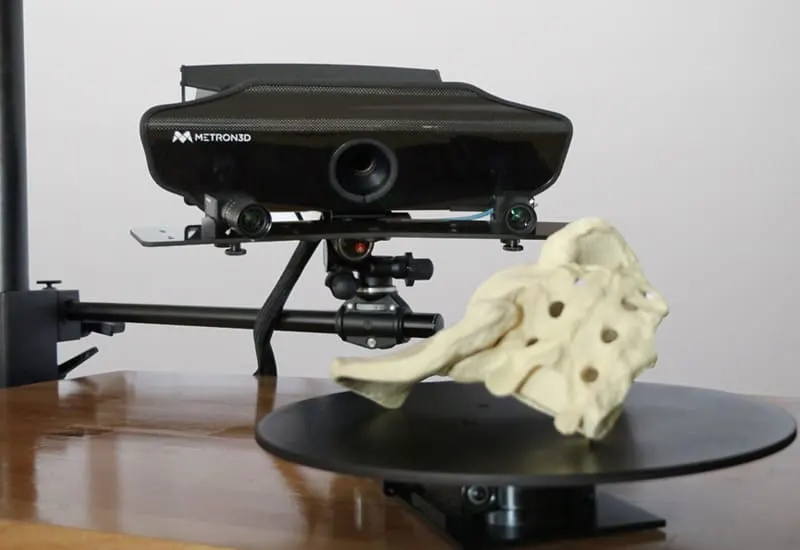
Triangulation 3D scanners
Use the light from the laser, the dot of the laser’s end light, and a camera to calculate a midpoint between those three measurements. These measurements combine with angle calculations to give a mathematical picture of the object that is translated into an image by the scanning software.
Pros. Because of the way its measurement tools are deployed, triangulation scanners don’t have nearly the range of time-of-flight scanners. However, this gives triangulation scanners the advantage in accuracy; they’re reliable up to microns, which are a level smaller than millimeters. If you need this kind of precision and are measuring something up close, triangulation scanners are the way to go.
Conoscopic holography
This scanner is when a single laser beam is projected onto the object’s surface and refracted back through a crystal and projected onto a charged-coupled device. Its diffraction pattern is frequency analyzed to determine the object’s measurements.
Pros
The main advantage of conoscopic holography scanners is that their concentrated laser lets you easily measure hard-to-reach places such as the depths of holes. Only a single ray path is needed for measurement, so it’s kind of like drilling into something without the physical disruptions of that process.
Cons
Because they only use one ray path, conoscopic scanners are not your fastest bet for measuring large surfaces. They can still be used for that, but there are easier and quicker ways with other types of scanners.
Handheld scanners
Every handheld 3d scanner works with the same triangulation method as mentioned above, only instead of using a stationary scanning device, the laser is moved along the object by hand.
Structured Light Technology Scanners
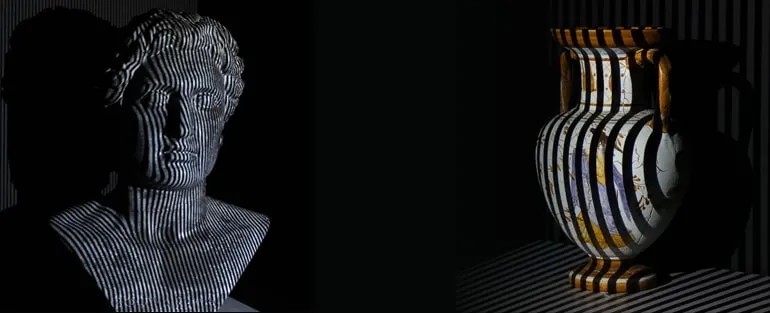
These scanners project a pattern of light onto the object and find the deformities of the pattern. A camera looks at this pattern and calculates the measurements of every point of view in the field.
Modulated light scanners
These continuously shine a changing light at the object, and the camera detects the refraction. The distance the light travels determines the amount the pattern shifts.
Tips
Now that you have an idea of what type of scanners are out there, here are some tips on what to look for no matter which kind you decide on.
Accuracy
Scanners that use lasers emit only one line of measurement when they scan, whereas structured light scanners send out a web of lines, which makes structured light scanners much more accurate in their scannings.
Depending on the dimensions of your object to be scanned and what you want to do with that scan, a laser scanner’s advantages may outweigh this disadvantage. But it’s something to keep at the forefront of your mind while you’re looking for equipment.
Object motion
3D laser scanners are best at capturing objects that are in motion because they have the ability to collect a series of partial scans from the laser beam as the object moves. A laser scanner’s software will put these scans together to form a single 3D model to work with.
But a structured light scanner is best when you’re scanning a still object because its web of lights take photos through different patterns of light projected onto the object’s surface. This builds a detailed 3D cloud geometry model of the object, which is more accurate than what can be achieved with laser scanners.
Speed
There is no clear advantage to either laser or structured light scanners when it comes to speed. Laser scanners seem like they would be inherently faster with their single sweep of light, and that used to be the case, but structured light scanners have caught up to them and can now scan up to one million points per second.
So when you’re thinking about speed, it really comes down to the individual scanners you’re looking at. The more industrial and high-end scanners on the market will have faster scanning time, but they’ll also have industrial and high-end prices. If scanner speed is your primary concern, you’ll have plenty of variety to choose from.
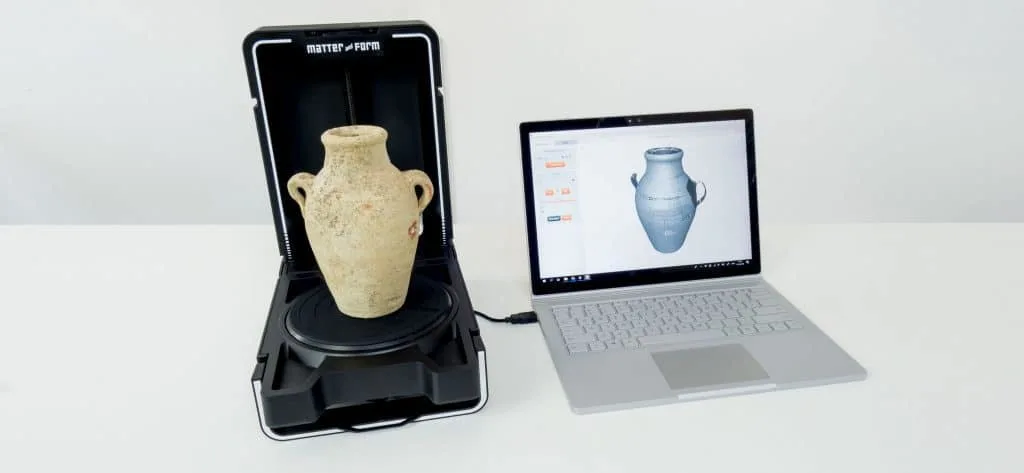
Lighting conditions
Since 3D scanners are dependent on light to do their jobs, you need to seriously think about the environment in which you’re going to be scanning. Unsteady lighting can dramatically reduce the quality of your scans no matter what kind of scanner you choose.
However, the flip side is also true – laser scanners and structured light scanners are equally effective with indoor lighting, as long as it’s consistent. But if you’re scanning outdoors, laser scanners are almost always the way to go.
Their range goes a lot further and they are honed to filter out ambient light, unless the lighting conditions change suddenly or dramatically. Structured light scanners are limited in range to what the intensity of their bulb can reach, so backing that up with indoor light that you can control makes it easier for them to expand their coverage. Outdoor lighting tends to be less controllable, which makes laser scanners better for that environment.
Safety
By definition, lasers are super concentrated beams of light and energy; therefore, you have to be careful and take the necessary precautions for your eyes and skin areas that may be in danger of touching the laser.
There are plenty of 3D laser scanner options specifically built for scanning organic objects including humans, and structured light scanners use LED so you shouldn’t worry about their emissions at all.
But use basic machine safety and your own common sense when working with any 3D scanner; these are still pieces of equipment that have moving parts and heft to them, so make sure you’re aware of all the safety quirks of your specific scanner.
Cost
There’s no set answer to how much you will have to pay for a 3D scanner. They run the gammant from affordable for individual use to only a giant manufacturing company can swing that.
If you’re this close to buying one, you should know your budget and what you’re going to use the scanner for, so put those together and see what you can find. Alternatively, you can see what’s out there and adjust your expectations to what you can afford. Either way you’ll find something.
3D scanning is a great companion process to 3D printing. It lets you make models of real objects that you may not have the time or expertise to draw from scratch, giving you access to a useful replication tool that doesn’t take a lot of extra setup. Now that you know what types are out there and what aspects to consider, buying one should be a breeze. Happy scanning!
FAQs About 3D Scanners
Yes. Professional 3D scanners are really expensive, and if you thought $1000 is expensive for a professional 3D scanner, that’s nothing in comparison with models that go up to $50,000. These are mostly used in the health industry, automotive industry, jewelry artists etc.
Artec 3D Scanner is a leader in the scanning technology, so they offer great deals on their 3D scanners, and 2 years warranty on all of their models, so I really recommend purchasing from them if you need the scanner for professional use.
Yes, you can use your phone for scanning, but you have to take good pictures of the object from all of the sides which sometimes can be tricky. You should use a 3D Scanner app that will guide you to take the pictures properly.
Yes, of course. This doesn’t mean that the handheld rapid scan will be like the professional 3D scanners you can buy, but it will be a handheld scanner you can create with a few simple items that you might even have at home like a camera, screws, stepper motor, line laser, etc.

